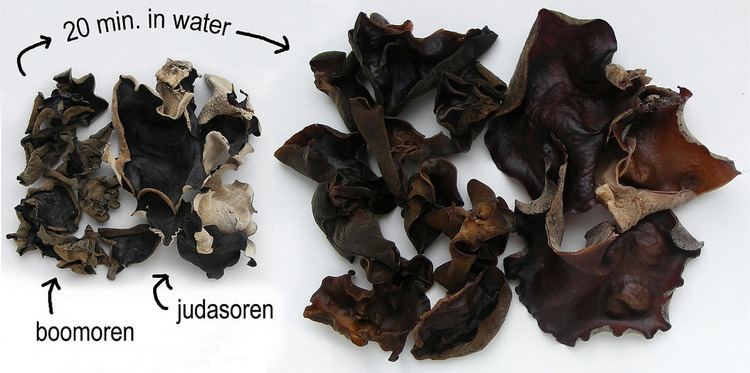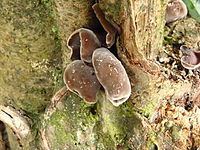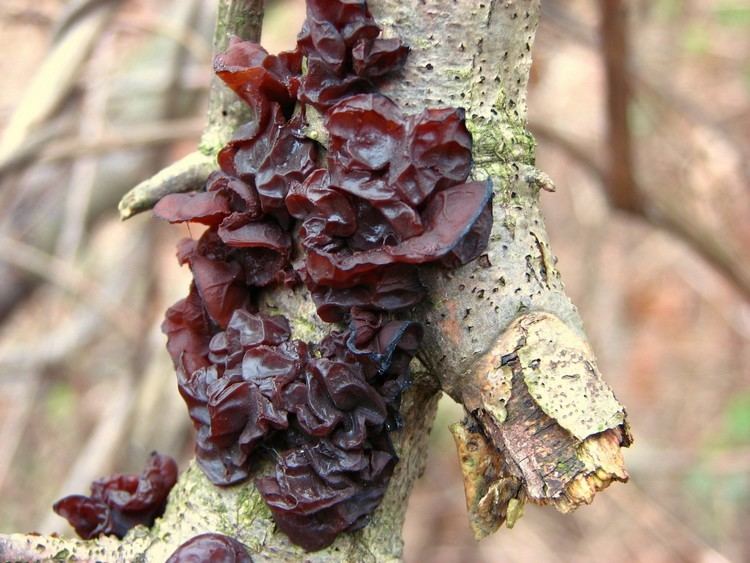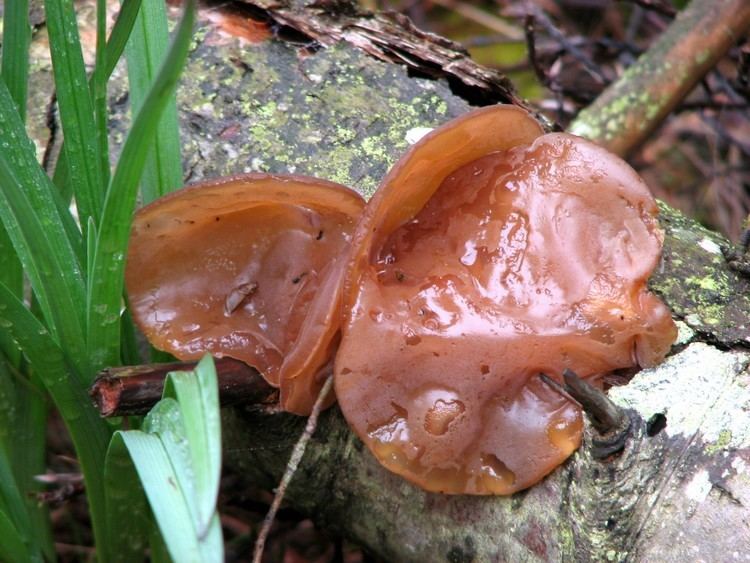Kingdom Fungi Genus Auricularia Higher classification Auricularia | Division Basidiomycota Scientific name Auricularia polytricha Rank Species | |
 | ||
Similar Jew's ear, Tremella fuciformis, True ls, Shiitake, Edible mushroom | ||
Cloud ear fungus (Auricularia polytricha, syn. Hirneola polytricha) is an edible jelly fungus. It grows on trees in mountainous regions, is gray-brown in color, and is often used in Asian cooking, especially Chinese cuisine.
Contents

Terminology

It is known as Mandarin Chinese: 云耳; pinyin: yún'ěr, lit. "cloud ear"), Chinese: 毛木耳; pinyin: máomù'ěr, lit. "hairy wood ear"), and in Japanese it is called ara-ge-ki-kurage (アラゲキクラゲ, lit. "rough-hair-tree-jellyfish"). It is also known as black fungus, black Chinese fungus (or mushroom), wood ear fungus, wood fungus, ear fungus, or tree ear fungus, an allusion to its rubbery ear-shaped growth. In Europe, it is frequently misidentified as "Jew's ear", and "Jelly ear", which are very closely related but distinct species.

In Hawaii, it is known as pepeiao which means "ear" In Southeast Asia, it is known as bok née in local English (from the Hokkien 木耳 bo̍k-ní) and is used in the salad kerabu bok nee. In Indonesia and Malaysia, it is called jamur kuping, meaning "the ear mushroom", and in the Philippines, the locals call it tenga ng daga, meaning "rat's ear", due to its appearance. In Chinese cooking, it is often referred to as "Black Treasure".
Description
Fruit body resupinate or pileate, loosely attached, laterally and sometimes by a very short stalk, elastic, gelatinous; sterile surface dark yellowish brown to dark brown with greyish brown bands, hairy, silky. Hymenium smooth, or wrinkled, pale brown to dark brown to blackish brown with a whitish boom. Hairs thick-walled, up to 0.6 mm long. Basidia cylindrical, hyaline, three-septate, 46–60 × 4–5.5 μm with 1–3 lateral sterigmata; sterigmata 9–15 × 1.5–12 μm. spores, hyaline, reniform to allantoid, 13–16 × 4–5.5 μm, guttulate.
Habitat and distribution

Auricularia polytricha is widely distributed in moist-deciduous to wet evergreen forests of the Western Ghats, Kerala, India. This species occurs in clusters on rotting branches and twigs and on decaying stumps and logs.
Uses

Auricularia polytricha is usually sold in dried form, and needs to be soaked in water before use. While almost tasteless, it is prized for its slippery but slightly crunchy texture, and its potential medicinal properties, including its newly discovered anticoagulant properties. The slight crunchiness persists despite most cooking processes. Auricularia polytricha is coarser than Auricularia auricula-judae, and is more likely to be used in soups rather than stir-fries.
According to Chinese medicine practitioners, eating dried and cooked wood ear can have health benefits for people with high blood pressure or cancer, and can prevent coronary heart disease and arteriosclerosis. It may also be effective in reducing LDL cholesterol and aortic atherosclerotic plaque, as demonstrated in a study on rabbits.
